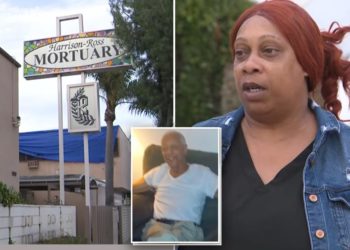Leo XIV on Sunday celebrated an outdoor Mass formally inaugurating him as the 267th pope of the Roman Catholic Church, telling world leaders, the assembled hierarchy of his church and more than 100,000 faithful gathered in St. Peter’s Square that the church needed a new unity that recognized its diversity.
In his homily, the new pontiff sought to bridge the divisions in the church between those who want to engage with the modern world by pushing ahead with the inclusive approach of Francis, his predecessor, and more conservative elements who favor a return to an emphasis on the church’s traditions.
The cardinals tasked with electing a pope, he said, had sought a “shepherd capable of preserving the rich heritage of the Christian faith and at the same time, looking to the future, in order to confront the questions, concerns and challenges of today’s world.”
Leo, an American who has Peruvian citizenship, also said in his homily, that “I was chosen, without any merit of my own, and now, with fear and trembling, I come to you as a brother.” He added that he wanted “us all to be united in one family.”
The morning also marked Pope Leo’s first steps into a global role. He met on Sunday with President Volodymyr Zelensky of Ukraine, which he said, “awaits negotiations for a fair and lasting peace,” called for peace in Myanmar and urged the world not to forget those “reduced to hunger.”
Vice President JD Vance, who had a contentious meeting in the White House earlier this year with Mr. Zelensky, was also in attendance and shook hands briefly with the Ukrainian leader before the Mass began. After the Mass, Mr. Vance, who the White House called “the first Catholic convert,” to serve in the position, briefly shook the pope’s hand on a long receiving line of dignitaries and royals.
It was unclear whether he would receive a private audience before returning to the United States on Monday.
But the focus of the day was the official beginning of Pope Leo XIV’s ministry in a day filled with ancient and symbolic rituals, some of which visibly affected him.
Leo, the former Cardinal Robert Prevost, who after his election on May 8 has still been signing his emails as Bob, took a spin around a packed St. Peter’s Square as crowds of people chanted his name, and captured the moment on upraised camera phones.
He then went into St. Peter’s Basilica and descended to what tradition holds is the tomb of St. Peter to pray. He late emerged on the basilica’s steps to celebrate the Mass.
A cardinal fitted his finger with the fisherman’s ring used as his seal. Leo, seemingly choked up, paused to look at on his hand. He also took on symbolic vestments that underlined his role as the church’s good shepherd and stood before symbolic rites of obedience from lay Catholics and clerics.
Framing his mission by echoing Jesus’ role as a “fisher of humanity in order to draw it up from the waters of evil and death,” he returned to the priority of Pope Francis, his predecessor, that the church keep to its evangelizing mission. Still, he said, it “is never a question of capturing others by force, by religious propaganda or by means of power,” but through love.
The new pope added that a pastor, like Peter, the first pope, needed to be close to “the flock without ever yielding to the temptation to be an autocrat, lording it over those entrusted to him.” He said the church needed to be animated by a “missionary spirit” and “closing ourselves off in our small groups” or “feeling superior to the world.”
But Leo emphasized the idea of a “coexistence of diversity” within what he called a “united Church” — an idea central to Saint Augustine. The new pontiff joined the Order of St. Augustine as a young man and eventually led its global operations from its headquarters just outside St. Peter’s Square.
This was a message many of the cardinals wanted to hear, after periods of division in the church. But many wanted to make sure Leo’s view of unity did not mean going backward, and that the new pope’s vision included Francis’ inclusive spirit.
In his days since becoming pope, supporters of Francis say they feel assured that his welcoming legacy is now safe. On Sunday, Leo reiterated that he sought a “unity which does not cancel out differences but values the personal history of each person and the social and religious culture of every people.”
Beyond the church, Leo said, “we still see too much discord, too many wounds caused by hatred, violence, prejudice, the fear of difference, and an economic paradigm that exploits the Earth’s resources and marginalizes the poorest.”
Marilyn Heller, a lawyer from Long Island, had tears in her eyes after the Mass.
“A pope from the United States,” she said, adding that she felt a new era had begun. “I feel like there is some new energy in the church.”
Elizabeth Dias, Emma Bubola and Elisabetta Povoledo contributed reporting.
Jason Horowitz is the Rome bureau chief for The Times, covering Italy, the Vatican, Greece and other parts of Southern Europe.
The post Pope Leo Calls for Diversity in Unity as He Begins His Pontificate appeared first on New York Times.




